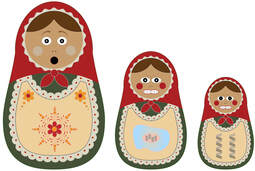(All of this work is done in collaboration with Arvid Ågren, Cleveland Clinic, and our postdoc, Martijn Schenkel, University of Groningen.)
Organisms are special. Although they are material objects, made of the same molecules as mountains and subject to the same physical laws as fires, they are different from all other material objects. Organisms appear to be endowed with a goal directedness absent from non-living things and are therefore the entities that invite purpose into scientific explanations. Combining Darwin’s theory of natural selection, which centers on purposeful organisms—organisms that struggle to survive environmental pressures, organisms that compete for access to mates—with the molecular biology revolution of the following century, which adopted a more Cartesian view of the body-as-machine, one emerges with a view that agency—i.e., the possession of interests, goals, and strategies—belongs to the individual organism, but also with the view that genes, genomes, and cells are mere machinery, working on behalf of the organism.
Despite its allure, this approach to biological agency has serious shortcomings. Most pressingly, modern genetics and cell biology have revealed that different parts of the genome and the body do not always serve the interests of the organism. Rather, the unity of purpose required for evolutionary agency to reside solely with individuals is constantly threatened from within by other agents, such as cancer cells and selfish genetic elements, which have the ability to promote their own propagation at the expense of other cells and genes. In the case of selfish genetic elements, these are not a mere curiosity; they are, in fact, the dominant component of animal and plant genomes. For example, transposable elements (also known as jumping genes), make up 50% of the human genome, and more than 80% of some plant genomes. Similarly, cancer is not restricted to humans and other mammals, but occurs in multicellular bodies across the tree of life.
And yet despite the opportunity for selfish genetic elements and cancer cells to erode the organism from within and shift agency to a lower level of organization, they usually do not. This is the paradox of the organism (a term first coined by Dawkins).
Organisms are special. Although they are material objects, made of the same molecules as mountains and subject to the same physical laws as fires, they are different from all other material objects. Organisms appear to be endowed with a goal directedness absent from non-living things and are therefore the entities that invite purpose into scientific explanations. Combining Darwin’s theory of natural selection, which centers on purposeful organisms—organisms that struggle to survive environmental pressures, organisms that compete for access to mates—with the molecular biology revolution of the following century, which adopted a more Cartesian view of the body-as-machine, one emerges with a view that agency—i.e., the possession of interests, goals, and strategies—belongs to the individual organism, but also with the view that genes, genomes, and cells are mere machinery, working on behalf of the organism.
Despite its allure, this approach to biological agency has serious shortcomings. Most pressingly, modern genetics and cell biology have revealed that different parts of the genome and the body do not always serve the interests of the organism. Rather, the unity of purpose required for evolutionary agency to reside solely with individuals is constantly threatened from within by other agents, such as cancer cells and selfish genetic elements, which have the ability to promote their own propagation at the expense of other cells and genes. In the case of selfish genetic elements, these are not a mere curiosity; they are, in fact, the dominant component of animal and plant genomes. For example, transposable elements (also known as jumping genes), make up 50% of the human genome, and more than 80% of some plant genomes. Similarly, cancer is not restricted to humans and other mammals, but occurs in multicellular bodies across the tree of life.
And yet despite the opportunity for selfish genetic elements and cancer cells to erode the organism from within and shift agency to a lower level of organization, they usually do not. This is the paradox of the organism (a term first coined by Dawkins).
Our project |
This project seeks to model the stability of organismal agency in the face of recurrent intra-organismal conflicts from agents at lower levels of organization (e.g., selfish genetic elements or cancer cells) and offer the first quantitative approach to measuring its evolutionary stability. In particular, this project models agency at multiple levels simultaneously by extending insights from inclusive fitness theory to show that organismal parts need not exhibit unity of purpose or joint orientation toward a common goal for relevant forms of organismal agency to evolve. A key output of this work will be new formal models of multi-agent systems based on a reimagining of the concept of organismality
|
One part of a larger effort |
The work described above is part of a larger effort on Agency, Directionality, and Function, which is funded by the John Templeton Foundation and spearheaded by Alan Love at the University of Minnesota.
|

